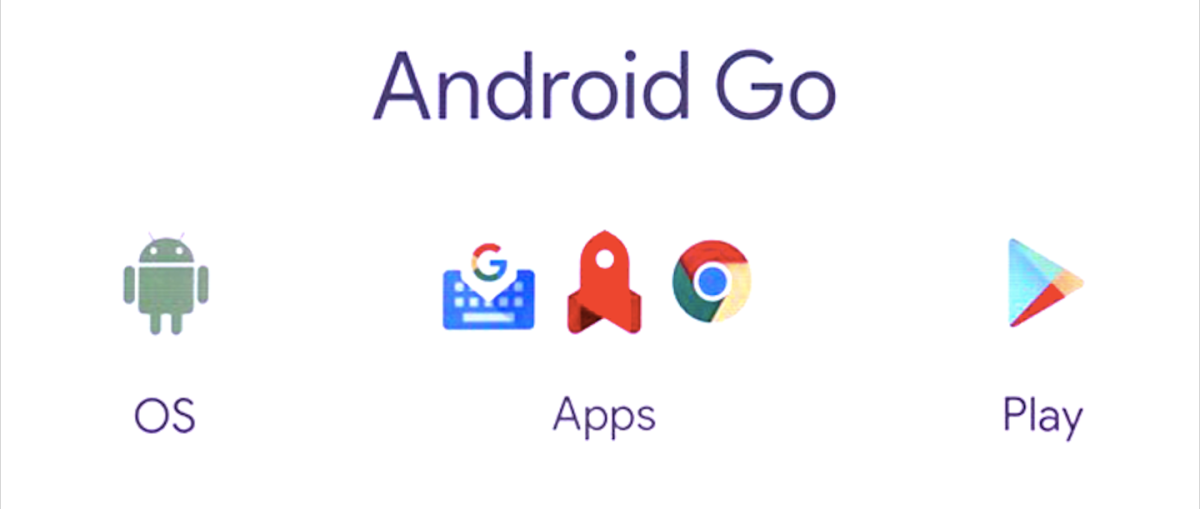Your daily selection of the hottest trending tech news!
According to Android Central – Android Forums, News, Reviews, Help and Android Wallpapers
Android Go will significantly lower the barrier to entry for smartphones in emerging markets.
For a few years now, Google has been saying that its next billion users will come from countries like India. With a projected 500 million users estimated to make their way online for the first time over the next five years, Google sees a lot of potential in catering to this market.
The company even has a Next Billion Users team that designs products and solutions for the Indian market. Helmed by Caesar Sengupta, the unit has rolled out payment services like Tez, a minimalist app that hooks into the government’s UPI interface for seamless bank transfers, a lightweight storage manager in Files Go, free public Wi-Fi at thousands of train stations across the country, and much more.
Its most ambitious bet is Android Go — a lightweight version of Android optimized for entry-level devices. Google has tried its hand at the budget segment previously with the Android One initiative, but Android Go is a reimagination of the budget segment entirely. During a visit to the country last year, Google CEO Sundar Pichai said that budget phones need to cost in the vicinity of $30 to be viable for the millions of Indians to consider making their first smartphone purchase. The Android Go platform is the realization of those efforts.
Android Go isn’t that different from the regular Android
Android Go uses the same foundation as the standard version of Android, but with several stability and performance tweaks thrown in to ensure it works on devices with underpowered hardware. The first version of Android Go is built on Android 8.1 Oreo, and the OS also has data management features integrated at a system-wide level, giving you the ability to closely monitor data usage.
And like all devices certified by Google, Android Go phones will come with Google Play Protect out of the box. The security suite leverages machine learning to look for malicious apps on your phone. It also constantly scans your app installs — even those that haven’t been downloaded from the Play Store — to ensure your device is secure.
The platform comes with its own suite of apps
As Android Go is designed primarily to run on phones with less than 1GB of RAM, Google has rolled out lightweight versions of its apps tailored for the platform.
Designed from the ground up, Google Go gives you the ability to query the web and find recommendations, delivering a similar experience as the full-fledged Google app for a fraction of the install size. That’s the same story with Google Assistant Go, which brings Assistant to devices with less than 1GB of RAM for the first time.
As for Gboard Go, the lightweight keyboard retains the same feature-set as the standard version — autocorrect, voice typing, multilingual language support, emojis and GIFs — but in a smaller package. The same holds true for Maps Go and Gmail Go as well. Chrome in Android Go will have Data Saver enabled by default.
Files Go is Google’s new storage manager, and it is fantastic. It does a great job of removing old files and cleaning the device cache, and it also comes with a feature that lets you easily send and receive files.
The lightweight apps combined with fewer pre-installed apps means you’ll get double the amount of storage on a phone with 8GB of internal storage when seen against the standard version of Android. The Play Store on Android Go devices will highlight lightweight apps that are designed to work best on the platform.
Qualcomm and MediaTek have pledged support
Both Qualcomm and MediaTek have announced support for the Android Go platform. Qualcomm has mentioned that low and mid-tier Snapdragon chipsets will be powering Android Go phones, and while we don’t have more to go on, but the fact that we’ll see Snapdragon branding indicates we’ll see some 2xx or even 4xx chipsets making their way to these phones.
As for MediaTek, the company has announced that the MT6739, MT6737, and MT6580 platforms will be used by upcoming Android Go phones. The MT6580 will be used by 3G-only devices, whereas the MT6739 and the MT6737 will power 4G-enabled handsets.
Coming later this quarter for under $50
With decent budget phones from the likes of Xiaomi available for under $100, Android Go devices need to cost significantly lower for them to be attractive to buyers in emerging markets. If early rumors are any indication, it looks like the first wave of devices will retail for around the $30 mark.
That’s for the Micromax Bharat Go, which is likely going to be the world’s first Android Go device. The device is slated to make its debut in India in the coming weeks and is estimated to be priced at ₹2,000 ($32), which gives us a baseline for what Android Go devices will generally cost. We don’t have a lot of details on the hardware powering the Bharat Go, but it’s said to feature 512MB or 1GB of RAM along with 8GB of internal storage. With an official unveil scheduled for the end of January, we don’t have to wait long to find out what’s in store.
With Android Go, Google is aiming to show that it’s possible to deliver a decent user experience on sub-$50 devices. By optimizing the software to run effectively on low-powered hardware and introducing lightweight versions of popular apps, Google is finally on track to provide a cost-effective solution for those looking to make the switch from feature phones.
- Got any news, tips or want to contact us directly? Email esistme@gmail.com
__
This article and images were originally posted on [Android Central – Android Forums, News, Reviews, Help and Android Wallpapers] January 29, 2018 at 01:29AM. Credit to Author and Android Central – Android Forums, News, Reviews, Help and Android Wallpapers | ESIST.T>G>S Recommended Articles Of The Day




